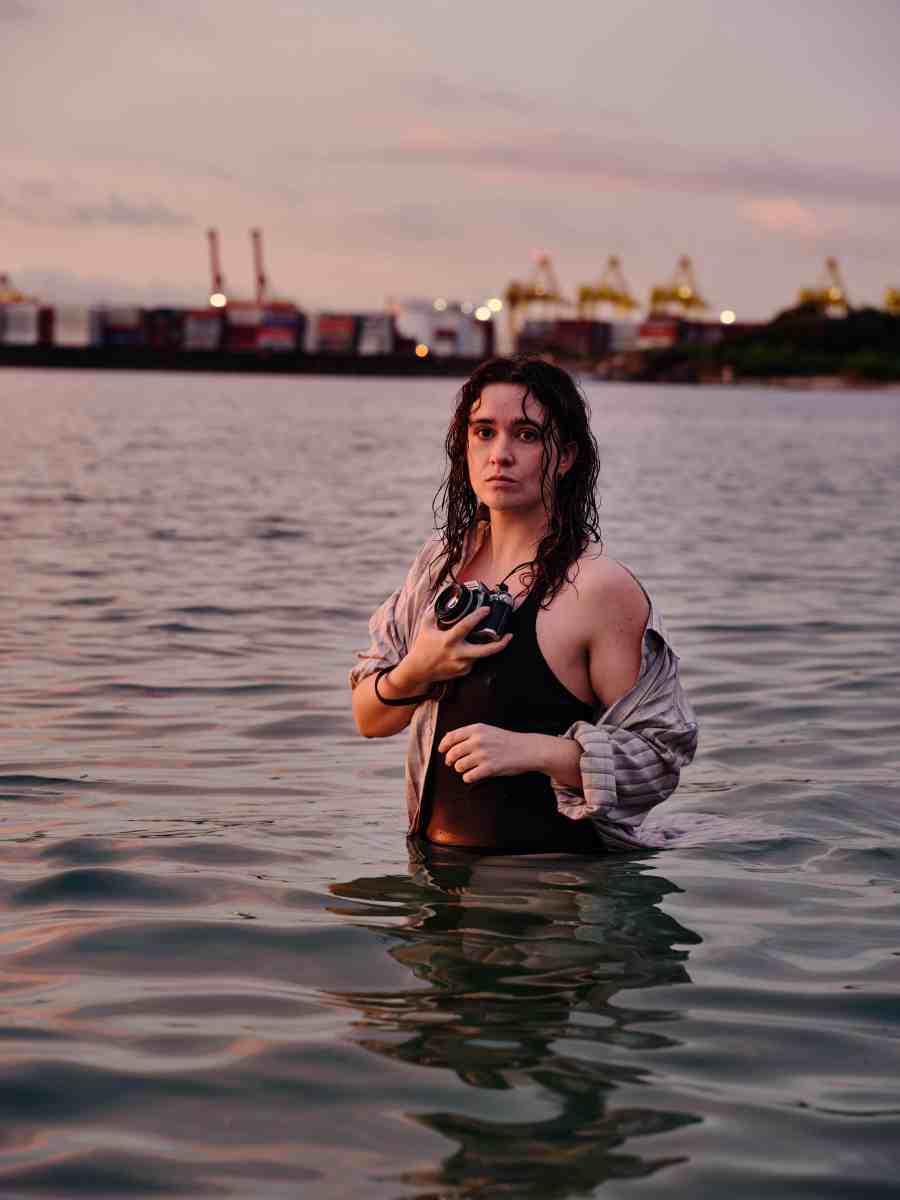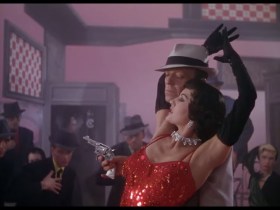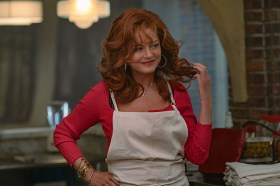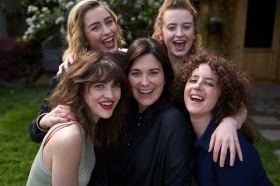Content warning: This review discusses suicide, substance abuse and sexual assault.
I found the new Stan Original miniseries Exposure incredibly powerful, and also very hard to watch. It took me a long time to press play, and I was glad each of its six episodes is less than 30 minutes, because the atmosphere creator/writer Lucy Coleman and director Bonnie Moir conjure is so oppressively grimy.
This feels like arthouse TV – uncompromisingly marshalling the medium’s vocabulary to express ambivalent ideas and sensations, rather than to engross the viewer in escapist storytelling and moral pageantry. It’s beautifully made on every level – writing, mise-en-scène, performances, pacing and editing. So it’s fitting that Exposure had its recent premiere at the Sydney Film Festival.
Just as some people enjoy attending film festivals to be challenged and provoked – both aesthetically and intellectually – you may already know if Exposure is the kind of show you can’t wait to watch. Or you already know the kind of mood you’ll need to be in.
I won’t say I enjoyed this. But I admire the deft way it marinates the viewer in the subjectivity of a protagonist, Jacs Gould (Alice Englert, Dangerous Liaisons), who’s not just ‘flawed’ but often actually repellent. The whole series is about deciding to watch something that doesn’t feel good, and then recognising it was worth it.
Read: First look at Exposure on Stan
An unlikeable heroine
Jacs is a 27-year-old art photographer whose impulsive behaviour, both self-centred and self-harming, makes her seem younger. We meet her in an unmoored period of grief-stricken regression. But Jacs is also just learning some hard truths about herself.
Her best friend, Kel (Mia Artemis, Sweet Tooth), has just died by suicide, and Jacs returns from Sydney to their hometown of Port Kembla for the funeral. Though she reconnects with her close school friend, and Kel’s ex-boyfriend, Angus (Thomas Weatherall, Heartbreak High), Jacs struggles with the fact that her mum Kathy (Essie Davis, Miss Fisher’s Murder Mysteries) is building a new empty-nester life with a dorky boyfriend, Barry (Daniel Frederiksen, Petrol).
Jacs accesses Kel’s phone – of course she knows the lock code – to see multiple phone calls on the night of Kel’s death from a number Kel had saved as ‘DO NOT MESSAGE’. Before she died, Kel had been visiting Port Kembla regularly; Jacs had assumed Kel was seeing her mum Val (Victoria Haralabidou, The Tourist), but at the funeral, Val says she hasn’t seen Kel in months.
So, when Jacs’ old high-school crush and post-funeral hookup, Jai (David Howell, One Night), says he spotted Kel on the beach with a dark-haired man, a grief-stricken Jacs becomes consumed by the conviction that this mystery man did something to Kel that made her take her own life.
There’s an ironically predatory bitterness in the way Jacs repeatedly calls the number and dangles herself as bait to a series of local men to test their capacity for violence. She also immerses herself in the ocean; in the red womb of her old home darkroom; in messy drinking binges. The series, and Englert, doesn’t shy from this ugly kind of inebriation, from the grim reflex swigs to the belligerence and self-pity.
The textures of horror
Port Kembla’s combination of rust-belt industry and pristine ocean is crucial to the slow-burning menace that Moir and her cinematographer Aaron McLisky (Talk to Me) create. Smoke from the steelworks belches into rosy dawns and sunsets, as derricks crouch along the horizon like dinosaurs. It feels like a place where masculinity and violence curdle together.
Meanwhile, the use of velvety darkness and dissociative slips into hallucination reminded me of Thomas M Wright’s The Stranger, as Jacs sometimes senses Kel’s presence, or fantasises about savagely attacking her partners during sex.
These moments are more striking because the series is otherwise so naturalistic. The dialogue is often stumbling and awkward; long stretches use only ambient sound. (I could often hear what sounded like waves, or rain, during quiet interior scenes.)
I found myself repeatedly fearing for Jacs’ safety, even as I was repelled by the squalid way she doggedly confronts different men, from swaggering surfie Mick (George Mason) to smarmy online journalist Bronson (Thom Green). Because of its themes of submerged trauma and sexual violence, Exposure is already being compared to Michaela Coel’s I May Destroy You.
But Exposure reminded me most of In the Cut, directed by Englert’s mother Jane Campion, because of the way Jacs seems perversely titillated by the ambient sexual threat she perceives from men. The diffident, sensible Angus asks if that includes him, and playfully, she agrees. But is she right?
Exposure: no easy resolutions
It’s easy to treat Jacs as a familiar – if chaotic – kind of thriller-genre investigator. The story duly builds towards the mystery man’s fatal connection with Kel; but this revelation, when it comes, is oddly anti-climactic. Other answers have been waiting to be noticed.
As the series’ photography-pun title suggests, Jacs has a professional compulsion to capture – and aestheticise – her experiences. ‘That’ll be a good one,’ she says numbly as her flash illuminates a confused man she found on Kel’s dating app.
The way Jacs’ photographs appear onscreen as she takes them reminded me of Alex Garland’s similar treatment of the photographic impulse in Civil War – although Coleman and Moir engage much more ambivalently than Garland with the symbolic violence of the photographic gaze.
Jacs’ present-day actions in Port Kembla are interwoven with home-video footage from a Bali holiday nthat she and Kel took five years ago, both friends taking turns to point and pose for the camera. At first, these sequences play as bittersweet nostalgia: a reminder of Kel’s now-extinguished vivacity.
Then they introduce Raffa (Sean Keenan, Wake in Fright), a fellow Aussie on holiday, whom Kel finds attractive but Jacs instinctively dislikes. The truth of Exposure is in this found footage.
What seems to bother Jacs most is the idea that her closest friend’s inner self isn’t completely transparent to her. But something in this home movie clicked for me like a shutter: a moment when Kel’s voice seems to reach out across five years with a ghostly absolution for her grieving friend.
She says, ‘Before we do anything, we need to take a photo.’
The Stan Original series Exposure is streaming from 20 June 2024
If this article has raised issues for you, or if you’re concerned about someone you know, call the 1800 RESPECT national helpline on 1800 737 732 or Lifeline on 13 11 14.
Actors:
Alice Englert, Mia Artemis, Essie Davis, Thomas Weatherall, Victoria Haralabidou
Director:
Bonnie Moir
Format: TV Series
Country: Australia
Release: 20 June 2024





